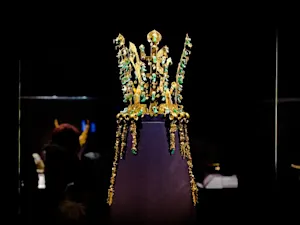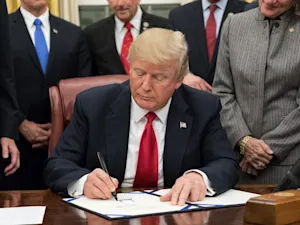
Melania Silent in Public, Blunt in Private on East Wing Demo
First Lady Melania Trump walks along the Colonnade of the White House Wednesday, June 24, 2020, en route to the Oval Office. Official White House Photo by Andrea Hanks. Public domain.
Melania Trump is quietly stepping back from one of Donald Trump's most controversial second-term projects: the demolition of the White House's historic East Wing to make way for a sprawling $300 million ballroom. While the president touts the construction as a legacy-defining upgrade, the first lady appears to shrug off the spectacle, privately telling associates it is "not my project," according to multiple reports.
A Private Rift Over a Public Project
Behind closed doors, Melania Trump has allegedly expressed concerns about the rapid teardown of the East Wing, a space traditionally associated with the first lady's offices and public activities. According to journalists with The Wall Street Journal, administration officials and sources close to the White House say Melania "privately raised concerns about tearing down the East Wing and told associates it wasn't her project."
The East Wing demolition has already erased significant parts of White House history, including the Jacqueline Kennedy Garden, the East Colonnade, and the offices where Melania and her staff once worked. The destruction is so extensive that it is visible from space, as reported by the Daily Beast, underscoring the scale of the transformation.
Vanity Project or Visionary Legacy?
Donald Trump has framed the ballroom as a grand addition to the White House, a $300 million undertaking funded by private donations. The project's cost has ballooned from an initial $200 million estimate, and the ballroom's planned capacity has grown from 650 to 900 guests, making it larger than many expect for a presidential venue, as reported by The Daily Beast.
Yet, Melania's alleged comments, said to be made in private, suggest a disconnect. Rather than championing the project, she has reportedly told associates it is not her endeavor, effectively absolving herself of responsibility for the demolition and its fallout. This distancing raises questions about whether the ballroom is more of a vanity project for the president than a shared vision for the White House's future.
Shrinking Role and Historic Loss
The East Wing has long been the domain of the first lady, housing her offices and serving as the backdrop for many of her initiatives and public appearances. Melania's Christmas decorations, including the reportedly divisive blood-red trees she installed in the East Colonnade during her first term, were a hallmark of the space.
With the demolition underway, the first lady's traditional workspace and public platform are disappearing. The Jacqueline Kennedy Garden, a historic and symbolic site, has also been dismantled. This physical erasure signals a potential shrinking of the first lady's role and influence within the White House, a shift that has not gone unnoticed by observers and former insiders.
Stephanie Grisham, Melania's former chief of staff and White House press secretary, criticized the demolition on CNN, saying it "breaks her heart" and lamenting the speed and manner in which the historic spaces were destroyed, as reported by The Daily Beast.
The Lure: A Broader Shift in Tradition and Transparency
The drama surrounding the East Wing teardown highlights a broader transformation in the institution of the first lady and the Trump administration's approach to historic government spaces. The project bypassed the usual approval process for White House renovations, with the National Capital Planning Commission reportedly not receiving formal plans before demolition began.
The National Trust for Historic Preservation sent a letter urging a pause to the demolition until proper review could occur, warning that the new ballroom's size and massing could "overwhelm" the White House's classical design, as reported by PEOPLE.
Despite these concerns, the White House defended the project as a benefit to future presidents and visitors, with spokesman Davis Ingle stating that the upgrades would make the People's House "more useful and beautiful for generations of presidents and Americans to come," as reported by New York Daily News.
Melania's Public Silence and Private Distance
Melania Trump has not publicly commented on the demolition of the East Wing, where her offices once stood. Since her husband's return to the presidency, she has spent much of her time outside Washington, preferring Mar-a-Lago in Florida or Trump Tower in New York, and has rarely appeared at official White House events.
What This Means Going Forward
The East Wing teardown and ballroom construction mark a significant moment in White House history. It reflects not only a physical transformation of the presidential residence but also a symbolic shift in the role of the first lady and the administration's relationship with tradition and public accountability.
Melania Trump's private concerns and public distancing highlight the tensions inherent in this transformation. Whether the new ballroom will become a celebrated legacy or a contested monument remains to be seen. For now, the leveled East Wing serves as a stark reminder of change — both welcomed and resisted — at the heart of American power.
References: Even Melania Is Distancing Herself From Donald Trump's White House Teardown | Melania Trump Privately Shared Concerns About Tearing Down East Wing: Report | Melania Trump didn't support White House East Wing demolition: report | How Trump Barreled Through D.C.'s Bureaucracy to Get His White House Ballroom
























